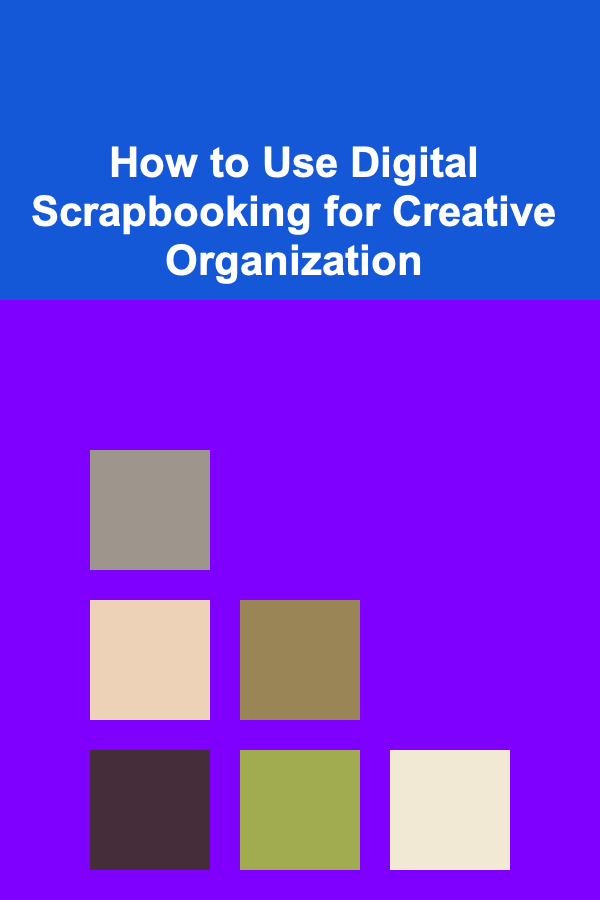
How to Film Your Wakeboarding Sessions
ebook include PDF & Audio bundle (Micro Guide)
$12.99$5.99
Limited Time Offer! Order within the next:

Wakeboarding is an exhilarating water sport that combines elements of water skiing, snowboarding, and surfing. Whether you're a beginner just learning the ropes or an experienced rider pushing the limits, documenting your wakeboarding sessions can be a great way to review your technique, share your progress with friends, or simply relive the thrill of the sport. Filming your wakeboarding sessions takes more than just pointing a camera at the water; it involves understanding the best techniques, equipment, and strategies to capture the excitement and dynamic nature of the sport.
In this article, we will dive deep into the essentials of filming wakeboarding sessions, including the gear you need, tips for getting the best shots, safety considerations, and how to edit the footage for maximum impact.
Why Filming Wakeboarding is Important
1. Technique Improvement
Recording your wakeboarding sessions allows you to analyze your movements, posture, and tricks from a different perspective. Watching yourself on video can highlight areas where you need improvement and show you what you're doing right. By comparing footage from different sessions, you can track your progress and fine-tune your skills.
2. Sharing the Experience
Wakeboarding is an adrenaline-filled sport that's meant to be shared. By filming your sessions, you can share your best moments with friends, family, or even the wakeboarding community. Social media platforms like Instagram, Facebook, and YouTube are great places to showcase your skills and gain inspiration from other riders.
3. Creating Memories
Wakeboarding often takes place in scenic locations, so capturing the beauty of the environment along with your actions can create lasting memories. Video footage can be revisited time and time again to relive the experience and share those epic moments with loved ones.
Understanding the Best Equipment for Filming Wakeboarding
1. Cameras
The right camera is crucial to capturing high-quality footage. For wakeboarding, you'll want a camera that is durable, water-resistant, and able to handle high-speed action. Here are some options to consider:
a. Action Cameras (GoPro, DJI Action)
Action cameras are the go-to choice for filming wakeboarding. They are compact, lightweight, and designed for extreme sports. Cameras like the GoPro HERO series and DJI Action are specifically built to withstand water, rough conditions, and high-speed motion. They can also be mounted to various surfaces, allowing for dynamic and versatile shots.
- Pros: Waterproof, durable, portable, wide-angle lens for immersive footage.
- Cons: Limited zoom, requires additional accessories for certain shots.
b. DSLR or Mirrorless Cameras
If you're aiming for higher-quality footage with more control over settings, a DSLR or mirrorless camera could be an option. These cameras offer superior image quality, and you can use different lenses to achieve various shots. However, these cameras are not designed to be submerged in water, so they will require special housings to keep them safe while filming.
- Pros: Superior image quality, more control over settings like exposure and focus.
- Cons: Expensive, bulky, not waterproof without additional gear.
c. Smartphones
For those who don't want to invest in a dedicated action camera, modern smartphones can capture impressive 4K footage. Using a waterproof case or a mount, you can film your wakeboarding sessions without the need for specialized cameras.
- Pros: Convenient, easy to use, good video quality, no need for extra equipment (if using a waterproof case).
- Cons: Limited battery life, may not handle high-speed motion as well as dedicated cameras.
2. Mounts and Gimbals
To stabilize the camera and achieve smooth footage, using the right mounts and gimbals is essential.
a. Helmet Mounts
A helmet mount provides a first-person perspective of your wakeboarding, allowing viewers to experience the sport from your point of view. These mounts work well for capturing the action while keeping your hands free.
b. Chest Mounts
A chest mount provides a slightly lower, more stable angle than a helmet mount, capturing the wakeboarder's movements and the water in a unique way. Chest mounts can also help give a more immersive feel to the footage.
c. Boat Mounts (Suction Cups)
For stationary shots, you can mount your camera to the boat using suction cup mounts. These mounts can attach to smooth, flat surfaces on the boat, allowing you to capture wide-angle shots of the rider and the surrounding environment.
d. Gimbals
Gimbals help stabilize the camera when filming from moving vehicles or boats. A handheld gimbal is a great tool for keeping your footage smooth and steady as you follow the wakeboarder's movements on the water. Some action cameras, like GoPro, can also be used with gimbals for even smoother shots.
3. Drones
Drones offer the ability to capture breathtaking aerial footage of your wakeboarding sessions. A drone can follow the action from above and provide stunning perspectives that a handheld camera can't achieve.
- Pros: Aerial views, wide-angle shots, dynamic and cinematic.
- Cons: Expensive, requires skill to fly, may have limited flight time.
4. Waterproof Cases and Housing
When using non-waterproof cameras like DSLR or mirrorless cameras, you must protect them with waterproof housings or cases. These ensure that your gear remains safe and dry, even when filming in the water.
- Pros: Protects the camera from water damage.
- Cons: Adds extra bulk, can be expensive.
Planning Your Shots
1. Know the Type of Footage You Want
Before you hit the water, it's important to plan what kind of shots you want to capture. Do you want to showcase your tricks and jumps? Or do you prefer action shots of the wakeboarder carving through the water? Here are a few options:
- Close-up Shots: Focused on the rider, capturing their movements in detail. You can achieve this using handheld gimbals or mounts attached to the rider's helmet or chest.
- Wide Shots: These shots showcase the rider's full body and their surroundings. You can capture these with a boat mount or from an aerial perspective with a drone.
- Action Shots: Capture the action at high speeds. These shots are best filmed with a camera mounted to the boat, the rider, or even using a drone.
- Cinematic Shots: Use slow-motion to create dramatic effects for impressive tricks like flips or spins. GoPro cameras, for example, can film in slow-motion, adding a cinematic touch to your footage.
2. Angles and Perspectives
Switching up your angles is crucial to keep your footage interesting and dynamic. Consider filming from the following angles:
- Side Shots: Position the camera beside the rider for a clean view of their body movements and the water behind them.
- Front Shots: Get in front of the rider, either by using a drone or a boat-mounted camera. This provides a great view of the rider's face and the tricks they're performing.
- Overhead Shots: An overhead shot taken by a drone or boat-mounted camera can provide an interesting perspective of the wakeboarder's movements and the overall environment.
3. Timing
Timing is essential for capturing the best moments. Make sure you know when the rider will perform a trick or when they'll approach a particular spot in the water. Anticipating these moments will help you prepare your camera and ensure you're ready to capture the best shots.
Filming Safety Considerations
Safety is paramount when filming wakeboarding sessions. Both the rider and the cameraman should take the necessary precautions to avoid accidents:
- Wear a Life Jacket: Always wear a life jacket while filming or wakeboarding. This ensures your safety in case of a fall or emergency.
- Camera Protection: If you're using a camera that isn't waterproof, make sure it is adequately protected in a waterproof case. You don't want to risk losing your equipment to water damage.
- Keep a Safe Distance: If you're filming from a boat or jet ski, maintain a safe distance from the rider. Avoid getting too close to prevent accidents.
- Check the Weather Conditions: Bad weather, such as high winds or storms, can make filming dangerous. Always check the forecast and ensure that it's safe to film before you start.
Editing Your Footage
Once you've captured your wakeboarding footage, it's time to edit it. Editing is an essential part of the filmmaking process, as it helps turn raw footage into an engaging, polished video.
1. Software for Editing
There are several video editing software options available, ranging from beginner-friendly to professional-level programs:
- iMovie (Beginner): A simple and intuitive video editor for Mac users, iMovie is perfect for basic editing.
- Adobe Premiere Pro (Intermediate to Advanced): A more powerful editing software for those who want greater control over their footage. Premiere Pro offers many advanced features such as color grading, special effects, and multi-camera editing.
- Final Cut Pro (Advanced): An advanced editing tool for professionals using Mac computers. It offers high-end features and is known for its speed and flexibility.
- DaVinci Resolve (Free and Professional): A free version of DaVinci Resolve is available for those who want professional-level editing without the price tag.
2. Editing Tips
- Trim the Footage: Cut out any unnecessary footage and focus on the best parts of the session.
- Add Music: Music can enhance the mood of the video and make it more engaging. Choose a track that fits the energy of your wakeboarding session.
- Use Slow Motion: Add slow-motion effects to highlight your most impressive tricks or jumps.
- Add Transitions: Smooth transitions between shots will make your video flow better and appear more professional.
Conclusion
Filming your wakeboarding sessions is a rewarding way to capture the thrill and excitement of the sport. With the right equipment, preparation, and editing techniques, you can create stunning videos that showcase your skills and allow you to track your progress. Whether you're looking to improve your technique, share your experience with others, or simply relive those adrenaline-filled moments, documenting your wakeboarding sessions is an essential part of the sport. Just remember to always prioritize safety while filming and keep experimenting with different angles and shots to get the most exciting footage possible.
Reading More From Our Other Websites
- [Toy Making Tip 101] Sustainable Play: Choosing Eco‑Friendly Woods for Homemade Toys
- [Polymer Clay Modeling Tip 101] Best Methods for Painting and Finishing Polymer Clay Dioramas for Tabletop Gaming
- [Personal Investment 101] How to Trade Forex: A Beginner's Guide to the Foreign Exchange Market
- [Personal Care Tips 101] How to Treat and Prevent Acne Scarring Using Facial Cleanser
- [Tie-Dyeing Tip 101] Pinning the Pattern: Innovative Tie‑Dye Designs Using Simple Clothespins
- [Personal Finance Management 101] How to Begin Investing in the Stock Market for Beginners
- [Small Business 101] Best Techniques for Hosting Virtual Workshops That Generate Sales for a Craft Supply Store
- [Star Gazing Tip 101] Protecting Your Eyes While Stargazing: A Beginner's Guide
- [Organization Tip 101] How to Research the History of Your Antique Pieces
- [Home Storage Solution 101] How to Make the Most of Your Closet with Shelf Dividers and Organizers

How to Customize Your Emergency Kit for Specific Needs
Read More
How to Stage a Vacant Home: Tips for Maximum Impact
Read More
How to Use Digital Scrapbooking for Creative Organization
Read More
Why Organizing Your Outdoor Space Can Enhance Entertaining
Read More
How To Understand Robot Perception and Sensing
Read More
How to Write a Screenplay for a Short Film
Read MoreOther Products

How to Customize Your Emergency Kit for Specific Needs
Read More
How to Stage a Vacant Home: Tips for Maximum Impact
Read More
How to Use Digital Scrapbooking for Creative Organization
Read More
Why Organizing Your Outdoor Space Can Enhance Entertaining
Read More
How To Understand Robot Perception and Sensing
Read More